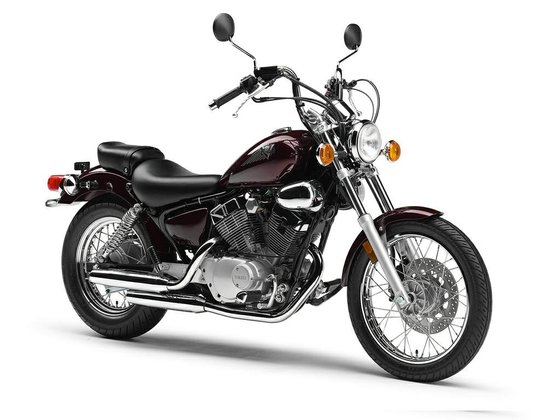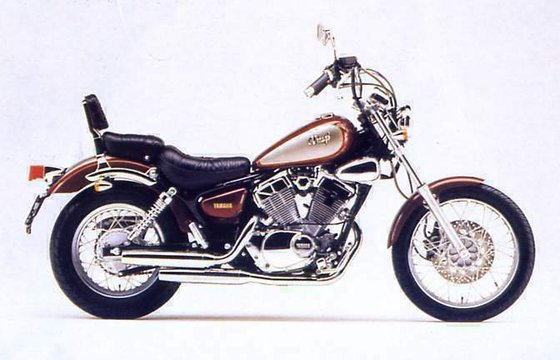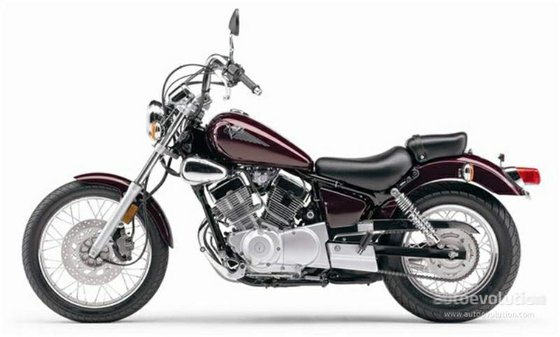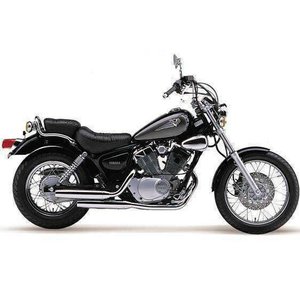Yamaha XV 250 Virago (2001–2007): The Quintessential Entry-Level Cruiser

Introduction
The Yamaha XV 250 Virago is a motorcycle that defies expectations. In a world where “bigger is better” often dominates cruiser conversations, this pint-sized V-twin proves that charm, accessibility, and timeless design can outweigh raw power. Produced from 2001 to 2007, the Virago 250 carved out a niche as one of the most beloved entry-level cruisers, offering a genuine V-twin experience in a lightweight, approachable package. After spending time with this machine, it’s clear why it remains a favorite among new riders, urban commuters, and even seasoned motorcyclists looking for a hassle-free ride.
Design: Classic Cruiser Aesthetics with a Approachable Twist

The Virago 250’s design is a masterclass in balancing classic cruiser DNA with user-friendly proportions. Its teardrop fuel tank, chrome-accented engine covers, and swept-back exhaust pipes scream “American-style cruiser,” but scaled down to a manageable size. The 27-inch (686 mm) seat height is a standout feature—it’s low enough to let even shorter riders plant both feet firmly on the ground, instilling confidence at stoplights or in parking maneuvers.
The bike’s proportions are deliberate: a 58.7-inch (1,491 mm) wheelbase gives it a stretched-out profile, while the 302-pound (137 kg) dry weight keeps it nimble. Chrome details—from the handlebars to the wire-spoked wheels—add a touch of premium flair, making it look far more expensive than it is. The two-tone paint options, like Raven and Black Cherry, accentuate its retro-modern vibe.
During my test ride, the Virago drew smiles and questions at every stop. It doesn’t pretend to be a heavyweight touring machine, but it radiates personality—a rarity in the 250cc class.
Engine and Performance: Small Displacement, Big Character

At the heart of the Virago 250 lies its defining feature: a 249cc air-cooled V-twin engine. This 60-degree SOHC powerplant produces 23 HP at 8,000 RPM and 15.9 lb-ft (21.6 Nm) of torque at 6,000 RPM. While those numbers won’t set speed records, the engine’s character is its true strength.
Thumb the electric starter (a welcome convenience), and the Virago awakens with a throaty rumble that’s unusually rich for a 250cc bike. The carbureted engine—fed by a 26mm Mikuni carb—delivers smooth, linear power. Acceleration is leisurely, with 0–60 km/h (0–37 mph) taking about 5–6 seconds, but the V-twin’s torque-rich nature makes it feel punchier than the specs suggest.
The 5-speed transmission is geared for versatility. First and second gears are short, perfect for city crawling, while fifth gear settles into a relaxed cruise at 90–100 km/h (56–62 mph). Pushing beyond 110 km/h (68 mph) requires patience, but the Virago’s sweet spot is clearly urban and backroad riding. Fuel efficiency is stellar: 23 km/l (54 mpg) means 342 km (213 miles) from its 9.5-liter (2.5-gallon) tank.
Handling and Comfort: Confidence-Inspiring Agility

Yamaha prioritized ease of use here, and it shows. The Virago’s lightweight chassis and low center of gravity make it laughably easy to maneuver. U-turns, lane changes, and parking lot shuffles feel effortless—a boon for beginners. The pullback handlebars and forward-set footpegs create a relaxed riding posture, though taller riders might find the ergonomics slightly cramped on longer rides.
Suspension is basic but effective. The telescopic front fork offers 5.5 inches (140 mm) of travel, soaking up potholes without drama, while the twin rear shocks (adjustable for preload) handle bumps adequately. Braking is a mixed bag: the front 282mm disc provides decent stopping power, but the rear drum brake feels underwhelming by modern standards.
Where the Virago shines is in low-speed stability. The long wheelbase and weighted feel inspire confidence, making it ideal for navigating traffic or practicing slow-speed maneuvers.
Competition: How the Virago Stacks Up
The 250cc cruiser segment has always been sparse, but the Virago 250 faced two key rivals during its production years:
1. Honda Rebel 250
The Rebel’s parallel-twin engine is smoother but lacks the Virago’s charismatic rumble. It’s also slightly lighter (320 lb vs. 319 lb wet), but its dated design and less adjustable suspension make it feel more utilitarian.
2. Suzuki GZ250
The GZ250’s single-cylinder engine is fuel-efficient but vibrates noticeably at higher speeds. Its seating position is more upright, appealing to commuters, but it lacks the Virago’s retro charm and V-twin appeal.
The Virago’s Edge:
- Unique V-twin sound and feel
- Superior low-speed handling
- Timeless, customizable design
Maintenance: Keeping Your Virago in Prime Shape
The XV 250 Virago is notoriously reliable, but a few key areas deserve attention:
1. Carburetor Care
The Mikuni carburetor can gum up if left unused. Regular fuel stabilizer use and annual cleanings are recommended. MOTOPARTS.store offers rebuild kits and aftermarket air filters to optimize airflow.
2. Chain Maintenance
The chain-driven final drive requires periodic lubrication and tension checks. Consider upgrading to a high-quality O-ring chain for longevity.
3. Brake Upgrades
The rear drum brake works but lacks bite. Swap the factory brake shoes for sintered pads from MOTOPARTS.store for improved stopping power.
4. Suspension Tweaks
Heavier riders might benefit from stiffer rear shock springs, available in our store’s suspension section.
Conclusion: A Timeless Gateway to Cruiser Culture
The Yamaha XV 250 Virago isn’t just a motorcycle—it’s a gateway drug to the cruiser lifestyle. Its approachable size, iconic V-twin engine, and head-turning design make it a perennial favorite. While it’s no highway dominator, its agility, fuel efficiency, and sheer rideability cement its status as one of the best entry-level cruisers ever built.
For owners looking to personalize their Virago, MOTOPARTS.store offers everything from performance exhausts to ergonomic seats. Whether you’re restoring a classic or upgrading your daily rider, we’ve got the parts to make your Virago truly yours.
Ride safe, and keep the rubber side down.
Specifications sheet
| Engine | |
|---|---|
| Stroke: | Four-stroke |
| Max power: | 17 kW | 23.0 hp |
| Max torque: | 22 Nm |
| Fuel system: | Carburettor, 26mm Mikuni BDS26 |
| Max power @: | 8000 rpm |
| Displacement: | 249 ccm |
| Max torque @: | 6000 rpm |
| Bore x Stroke: | 49.0 x 66.0 mm (1.9 x 2.6 in) |
| Configuration: | V |
| Cooling system: | Air |
| Compression ratio: | 10.0:1 |
| Number of cylinders: | 2 |
| Valves per cylinder: | 2 |
| Dimensions | |
|---|---|
| Wheelbase: | 1495 mm (58.9 in) |
| Dry weight: | 137 |
| Wet weight: | 145 |
| Seat height: | 685 mm (27.0 in) |
| Overall width: | 815 mm (32.1 in) |
| Overall height: | 1140 mm (44.9 in) |
| Overall length: | 2189 mm (86.2 in) |
| Ground clearance: | 145 mm (5.7 in) |
| Fuel tank capacity: | 9.5 L (2.5 US gal) |
| Drivetrain | |
|---|---|
| Final drive: | chain |
| Transmission: | 5-speed |
| Maintainance | |
|---|---|
| Rear tire: | 130/90-15 |
| Engine oil: | 10W40 |
| Front tire: | 3.00-19 |
| Brake fluid: | DOT 4 |
| Spark plugs: | NGK CR8E |
| Engine oil capacity: | 2.0 |
| Chassis and Suspension | |
|---|---|
| Rear brakes: | 130 mm drum |
| Front brakes: | Single 282 mm disc, dual-piston caliper |
| Rear suspension: | Twin shocks with adjustable spring preload, 100 mm (3.9 in) travel |
| Front suspension: | Telescopic fork, 140 mm (5.5 in) travel |



















